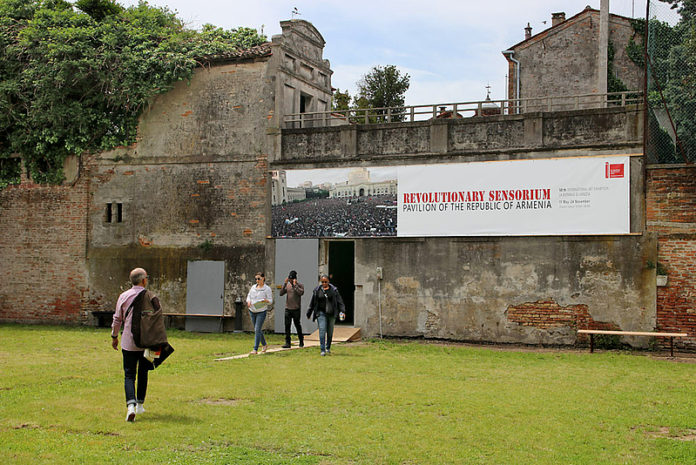By Tina Chakarian
In May 2019, the Republic of Armenia presented “Revolutionary Sensorium” at what is perhaps the most prestigious international art exhibition of our era — La Biennale di Venezia. The Armenian Pavilion was inspired by the 2018 Velvet Revolution, a historical event that quickly became the subject of global media coverage and analyses, with particular attention attributed to its non-violent nature: not a single bullet was ever fired.
What lessons did we learn from the revolution, exactly?
First, it underscored the invaluable role of youth in leading resistance. The protests were almost childlike in nature. Following Serzh Sargsyan’s official resignation, a group of teenagers brought back snow from the country’s mountainous terrain to Republic Square, only to start a snowball fight in front of parliament. Hundreds of young men and women held signs denouncing Sargsyan, comparing him to Cheburashka — a Soviet cartoon character. The use of drones and modern technologies in the revolution were indicative of a movement led by a new generation of Armenians, tired of outdated politics and Soviet-era politicians.
Second, women were at the forefront of the groups involved in the formation of organized, anti-government protest. To quote an article in Open Caucasus Media “on top of consistently being involved in the grassroots-organizing of social movements, they [women] also make up the majority of Armenia’s journalists.” It is women who form the majority of Armenia’s NGOs and media, and who had been leading the resistance through their civil activism, decades before the revolution took place.
Last July, international art curator Ralph Rugoff announced the theme of the 2019 International Art Exhibition La Biennale di Venezia. He named it “May You Live In Interesting Times,” an ode to the ancient Chinese curse. In December, the Economist named Armenia “Country of the Year.” The opening of La Biennale was to take place on May 9, 2019 — just two weeks following the one-year anniversary of the revolution. And so, we created Revolutionary Sensorium, a pavilion meant to recreate the events of April 2018 through video installations, artwork, and live performances.








